Record Highs for S&P 500 and Nasdaq Amid Nvidia Surge and Lower Treasury Yields | Daily Market Analysis

Key events:
- Eurozone - Deposit Facility Rate (Jun)
- Eurozone - ECB Interest Rate Decision (Jun)
- USA - Initial Jobless Claims
- Eurozone - ECB Press Conference
The S&P 500 and Nasdaq reached new record highs on Wednesday, driven by Nvidia's strong performance in the tech sector and declining Treasury yields. These market movements were influenced by further signs of a cooling labor market, which boosted hopes for a potential interest rate cut by the Federal Reserve later this year.
The Nasdaq Composite surged 2%, closing at an all-time high of 17,187.90. Similarly, the S&P 500 climbed 1.2% to achieve a record high of 5,354.03, while the Dow Jones Industrial Average increased by 96 points, or 0.3%.
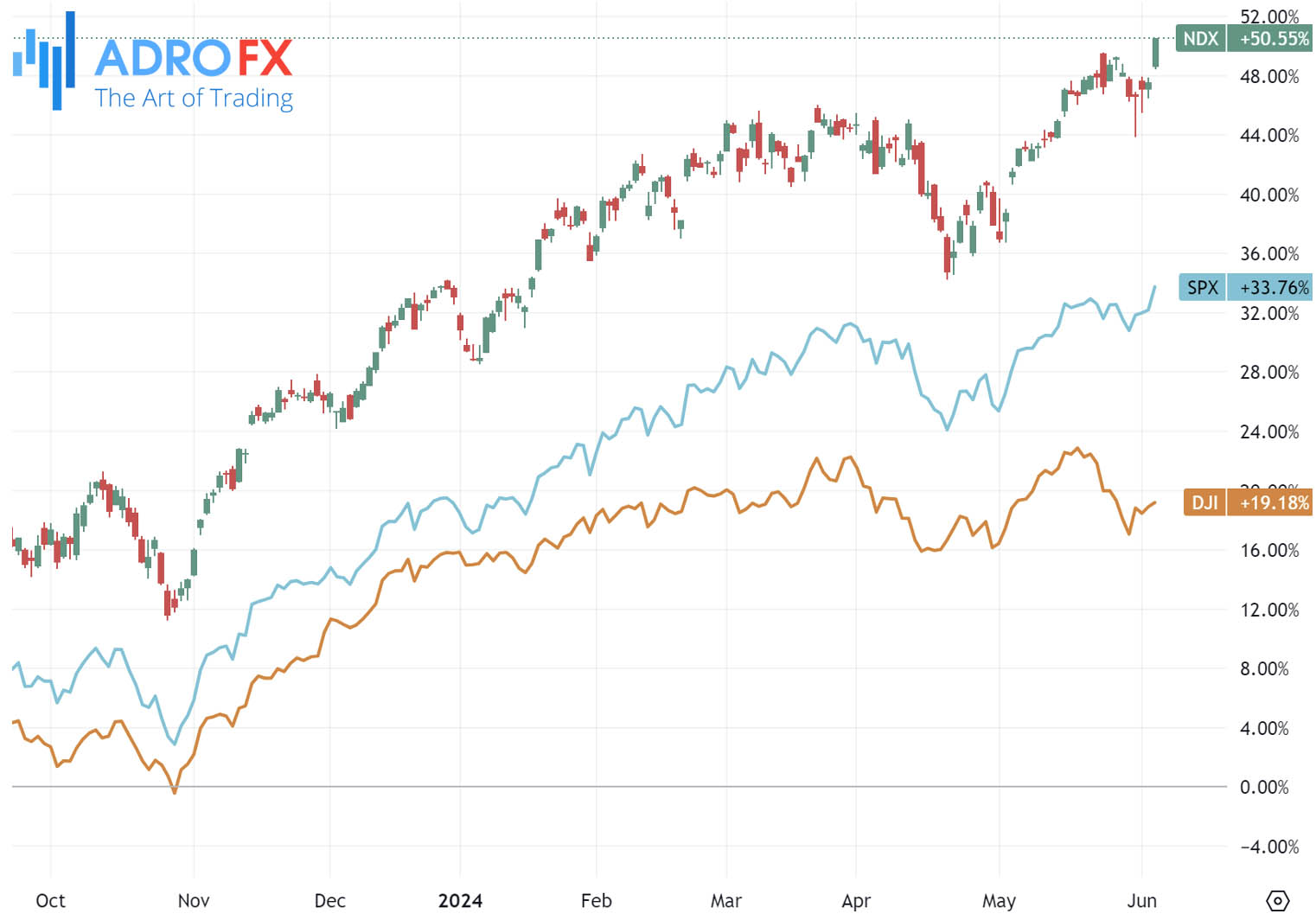
Treasury yields continued to fall this week as the likelihood of a rate cut grew, supported by data indicating that the economy added fewer private sector jobs in May - only 152,000 compared to 188,000 in April, falling short of the 173,000 expected by economists.
Currently, about 65% of traders anticipate a 25 basis-point rate cut by the Federal Reserve in September, a significant increase from the odds below 50% a year ago, according to CME's FedWatch Tool.
This labor market data follows a report from the previous day, which showed job openings had fallen to their lowest level in over three years in April.
On Thursday, the Australian Dollar recovered its recent losses, bolstered by a stronger-than-expected Trade Balance report. The AUD/USD pair improved after Australia's Trade Balance for May widened to 6,548 million, surpassing the expected 5,500 million and April's figure of 5,024 million. This improvement was driven by a 7.2% month-over-month drop in imports, reversing April's 4.2% increase, while exports declined by 2.5%, following a previous decrease of 0.6%.
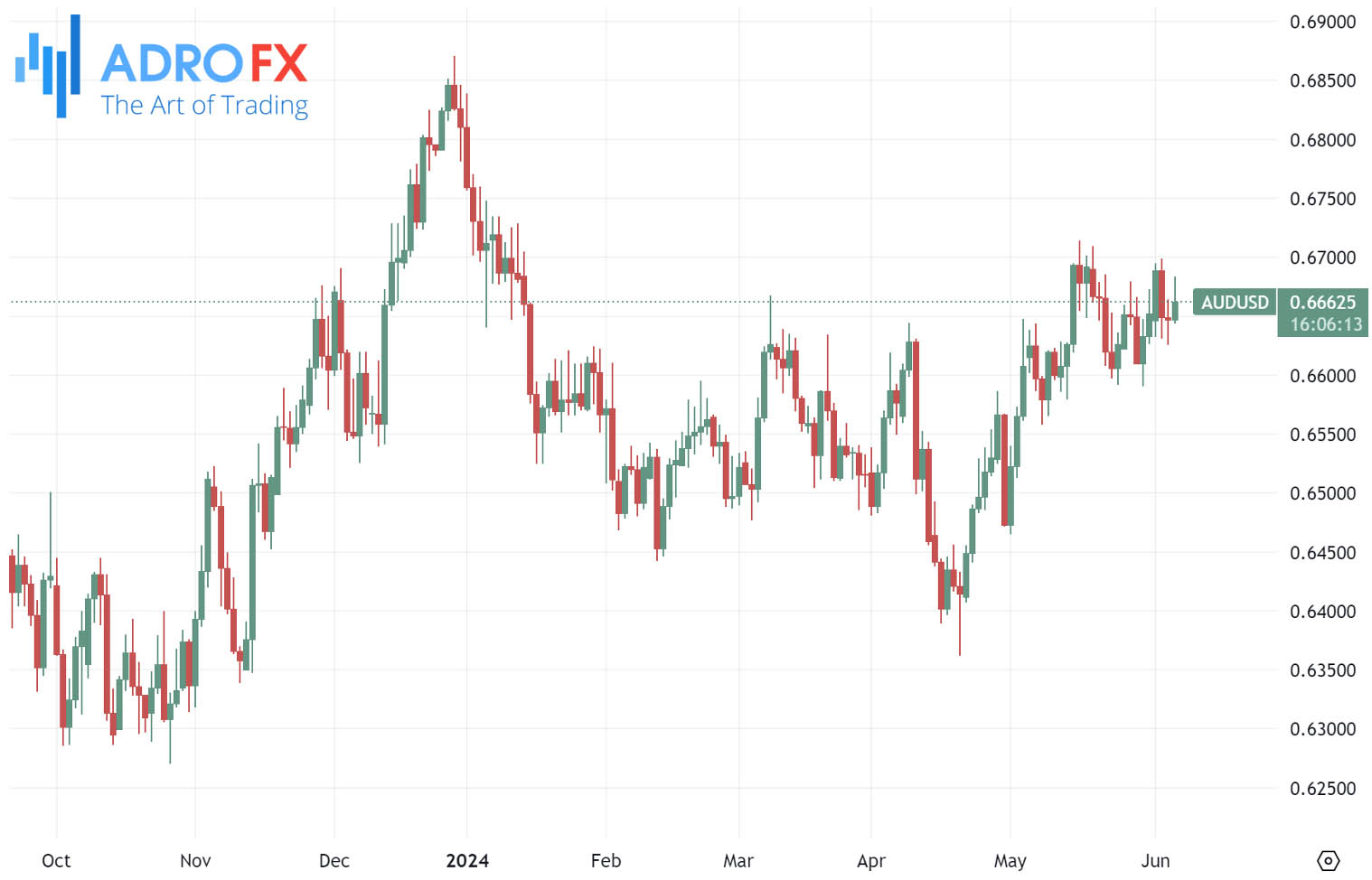
The Australian Dollar could further appreciate following a hawkish statement from Reserve Bank of Australia Governor Michele Bullock on Wednesday. Bullock indicated that the central bank is ready to raise interest rates if the CPI does not return to the target range of 1%-3%. She also noted a softening labor market on several measures.
Meanwhile, the Japanese Yen gained value due to improved risk sentiment and rising speculation of a US Federal Reserve interest rate cut in September. Falling US Treasury yields are putting downward pressure on the US Dollar, weakening the USD/JPY pair.
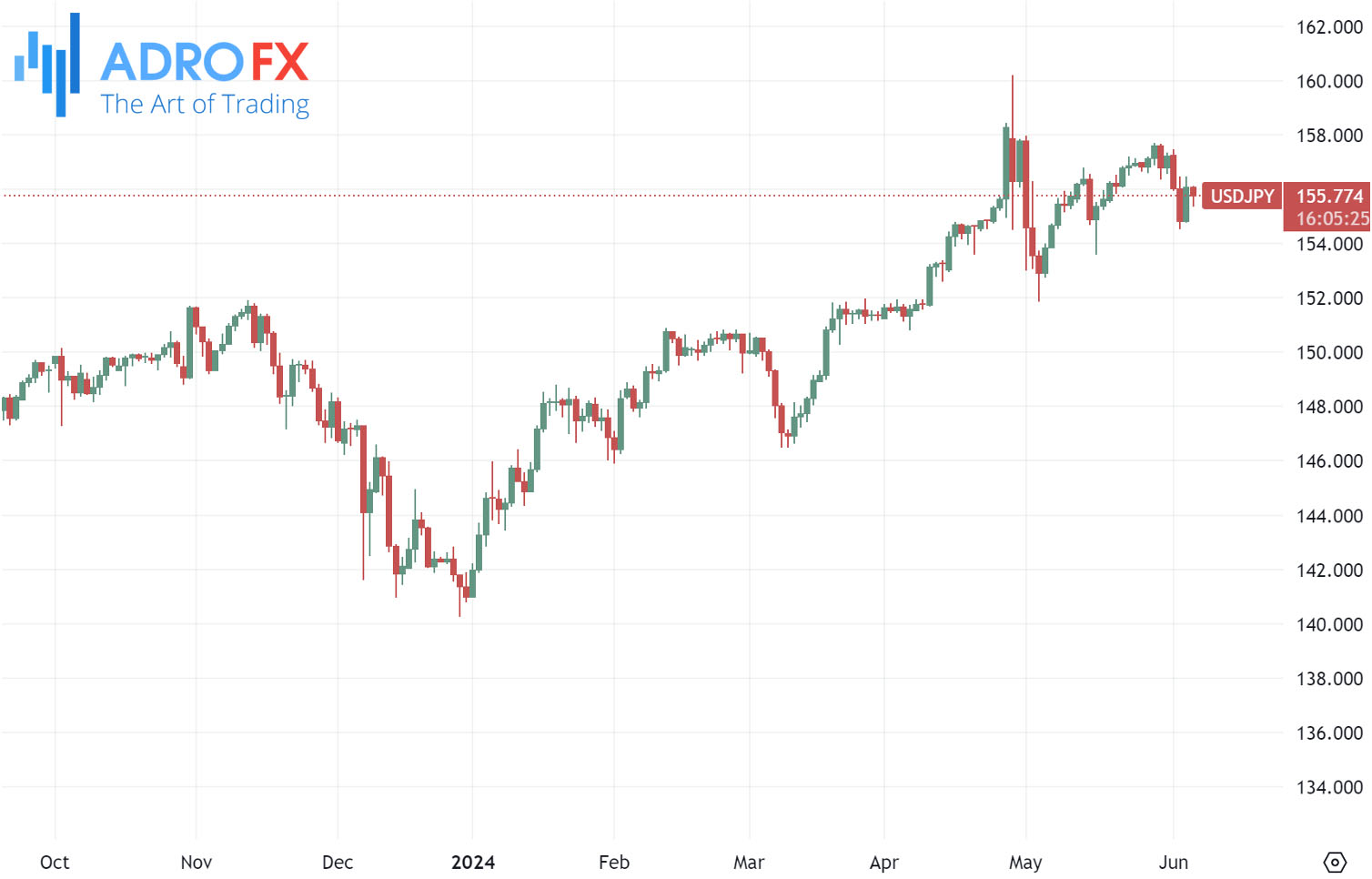
Japanese bond yields have also declined, with the benchmark 10-year government bond yield dropping below 1% for the first time in two weeks. However, Japan's real wages fell for the 25th consecutive month in April, as domestic inflation continued to outpace wage growth, complicating the Bank of Japan's efforts to normalize its policy.
BoJ Governor Kazuo Ueda stated on Tuesday that the central bank will conduct "nimble" market operations if long-term interest rates spike, signaling the BoJ's readiness to increase bond buying if necessary. Ueda also mentioned that the BoJ would adjust the level of monetary support if underlying inflation accelerates as forecasted, according to Reuters.
Reuters also reported that Japan's government will emphasize the challenges posed by a weak Yen in this year's long-term economic policy roadmap. This focus is expected to maintain pressure on the Bank of Japan to either raise interest rates or scale back its extensive bond-buying program.
Gold prices saw continued buying momentum for the second consecutive day, reaching a two-week high around the $2,373 mark during Thursday's Asian session. The near-term outlook remains bullish, bolstered by expectations that major central banks will reduce borrowing costs to stimulate economic activity.
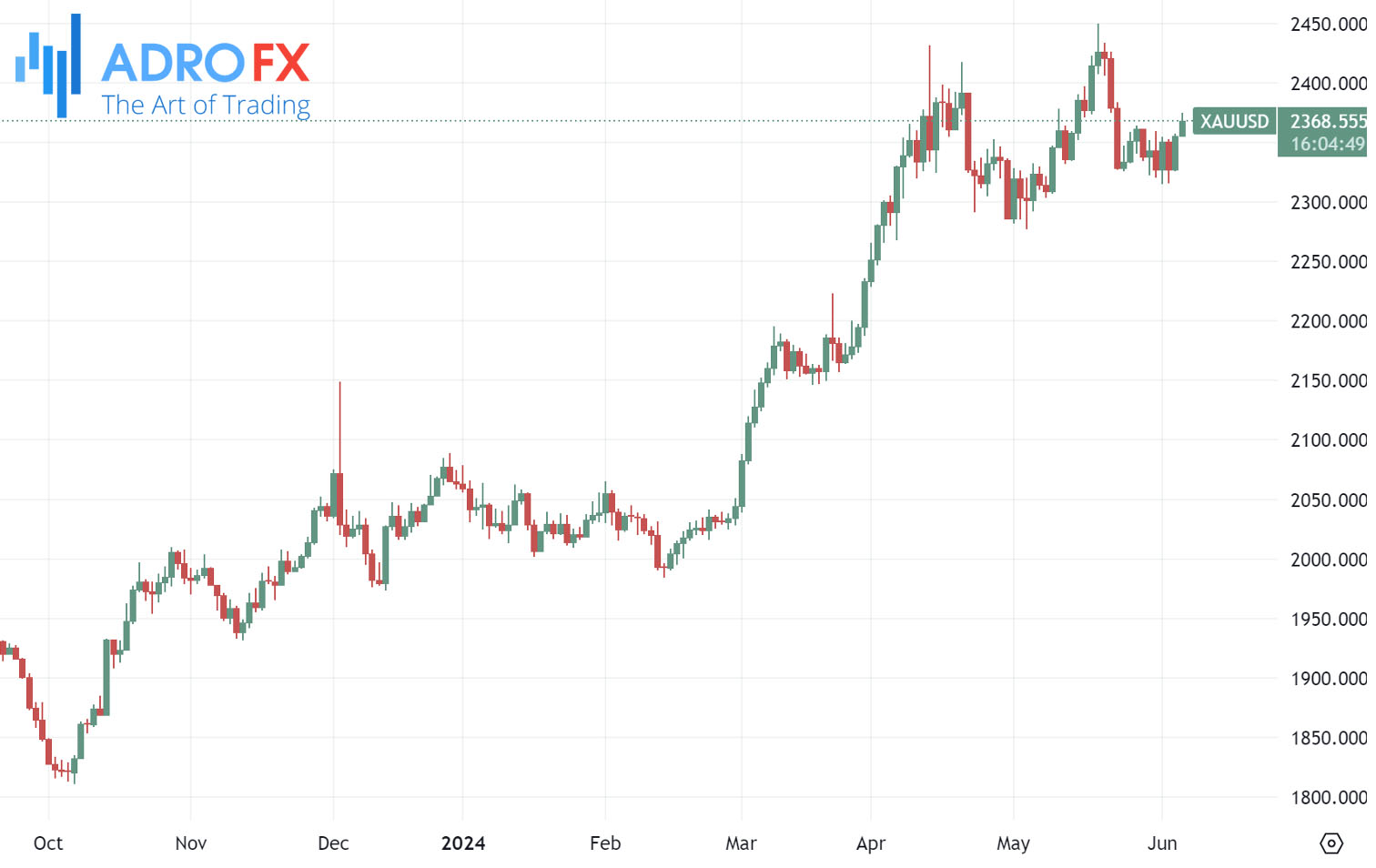
On Wednesday, the Bank of Canada cut its benchmark rate for the first time in four years, responding to concerns about slowing economic growth after holding rates at a more than two-decade high. Additionally, the European Central Bank is anticipated to announce its first rate cut since March 2016 at the conclusion of its June policy meeting today.
Market participants are also increasingly betting on an imminent rate cut by the Federal Reserve amid signs of a slowdown in the US economy. These expectations have kept US Treasury bond yields near their lowest levels in over two months, hindering the US Dollar's ability to sustain its modest recovery from the past two days. Furthermore, ongoing geopolitical tensions in the Middle East continue to support the safe-haven appeal of gold.
In parallel, the NZD/USD pair extended its rally to three-month highs around 0.6205 during early Asian trading hours on Thursday. Anticipations of two interest rate cuts by the Fed this year are exerting downward pressure on the Greenback, benefiting the Kiwi.
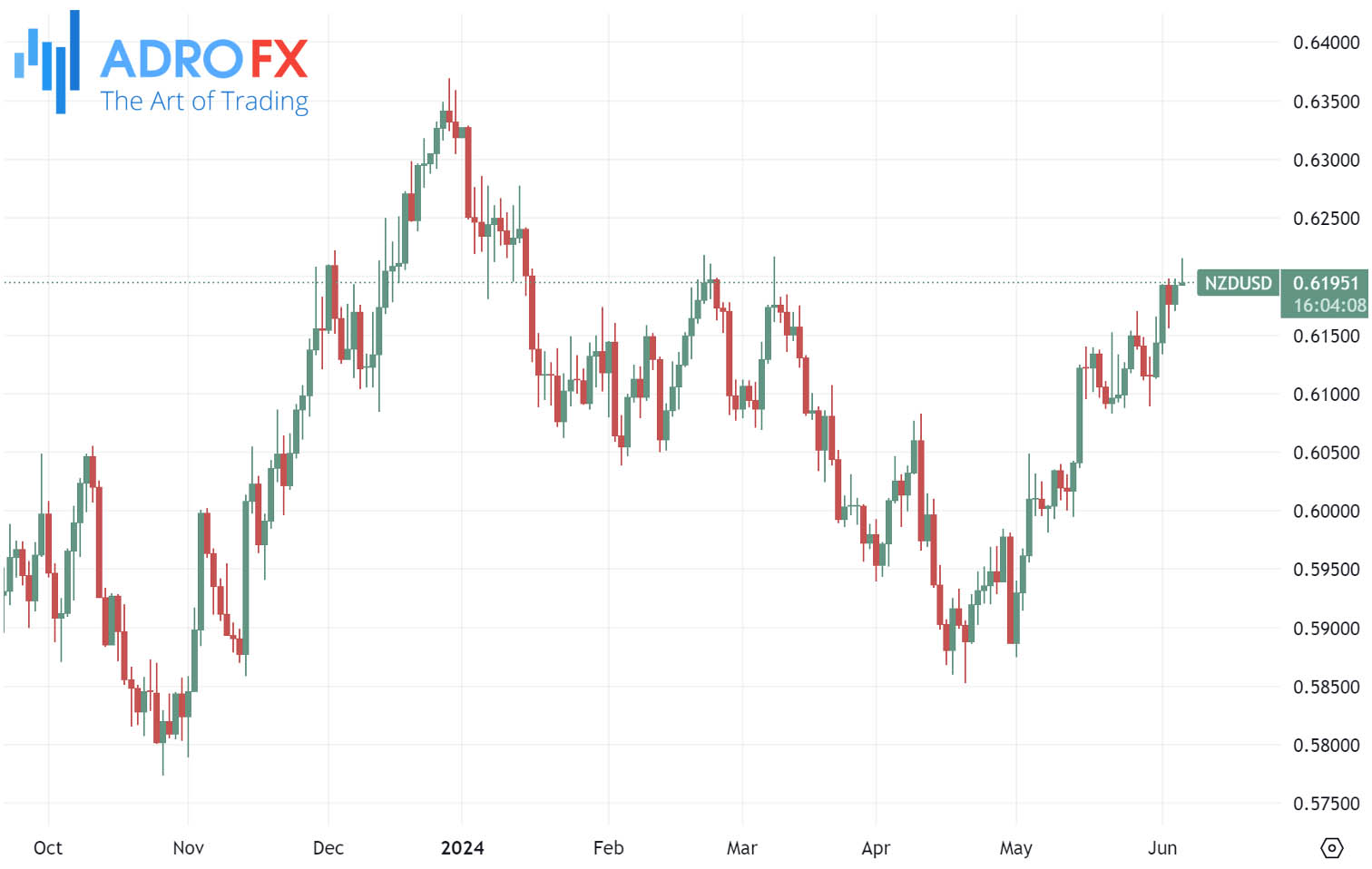
The New Zealand Dollar also received a boost from positive economic data out of China, New Zealand's largest trading partner. The latest data from Caixin revealed that China's Services PMI rose to 54.0 in May, up from 52.5 in April, significantly exceeding market expectations of 52.6. This encouraging data supports the NZD, adding to its strength against the USD.








